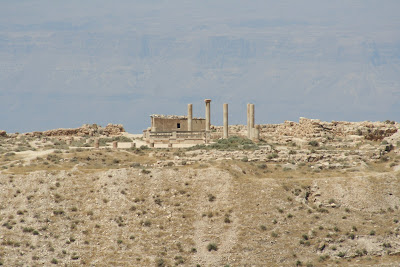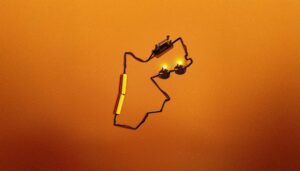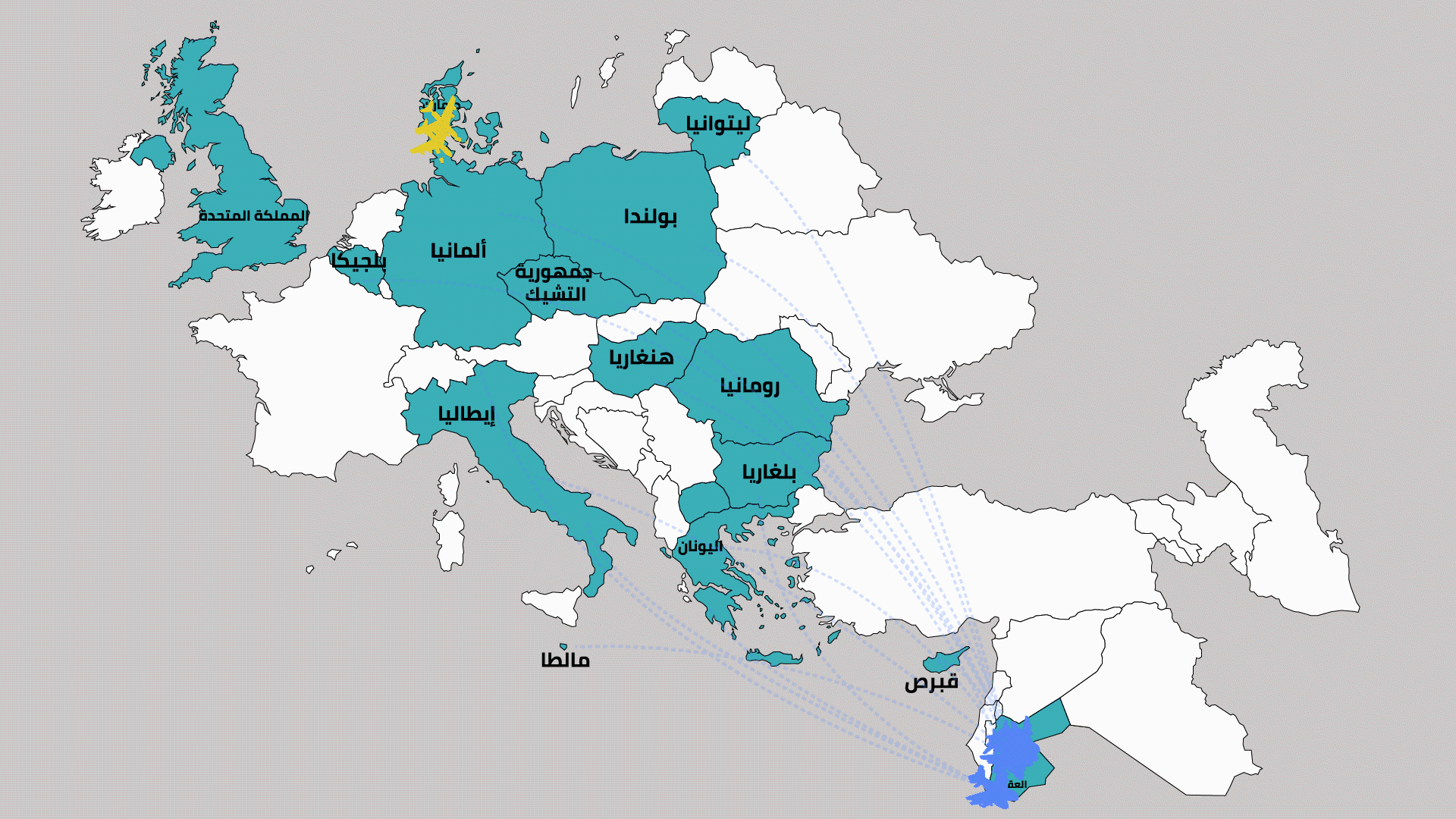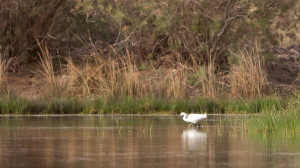Biblical Archeology In A Day
Written By: Melissa Manning & Wendy Merdian
Photography By: Melissa Manning
It is sad, but true, that many of Jordan’s archaeological treasures are missed by the average Urdaniyeen. Too consumed by work and family obligations to get out of the city, the discovery of the rich heritage of ancient generations is easily missed. Long-term ex-pats fall into the same trap, and a group of us decided to remedy that last summer with a whirlwind tour we called: “Jordanian Biblical Archeology in a Day”.
We enlisted the help of a resident biblical historian /archaeological aficionado with twenty years experience poking around the least visited and most significant site through out Jordan and Syria. According to Jadis, a computer generated list of sites complete with geo-coordinates, Jordan has thousands of sites ready for exploration. Our researcher decided we could visit ten in our one-day extravaganza before ’rock fatigue’ set in. Loading up our caravan of vehicles with enough food, water and sunscreen for the day, we left 7th circle at 8am.
Site I – Tell Al-Umeiri
The first site we visited, Tal Al Umeiri, is located just 6 km south of Amman. Dated from the Early-Middle Bronze period or nearly 4000 years ago, this four room dwelling is the best preserved Ammonite house in all of Jordan/Palestine/Israel. Imagine, a dwelling from the time of Abraham, a patriarch of the three mono-theistic faiths, within a stone’s throw of Airport Road!
A 1984 excavation led to the discovery of a seal impression which read: “Belonging to Milkom’or the servant of Ba’alyassa.” This fits with a reference to an Ammonite king mentioned in Jeremiah 39:14: “…’Do you know that Baalis the king of the Ammonites has sent Ishmael the son of Nethaniah to take your life?’
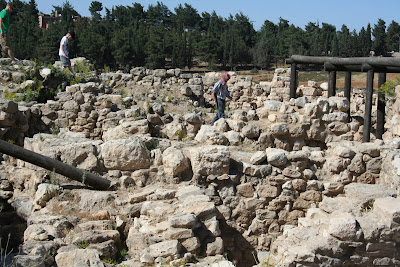
Site II – Ataroth
Heading south, our second stop was the ruins of Ataroth, the ancient city of Northern Moab established by the Gadites and Reubenites who, seeing that it was a good place to raise livestock, were happy to settle in the area east of the Jordan Valley rather than cross into the land (Numbers 32). The Numbers account agrees with the only extra-Biblical artifact to mention Atoroth, the Mesha Stone, also know as the Moabite stone. More on the Mesha stone when we arrive in Diban, about 17 km southeast of Ataroth, home of the Mobite king, Mesha, in the mid-ninth century B.C.
 The entire section of the Mesha stone dealing with Atoroth reads as follows:
The entire section of the Mesha stone dealing with Atoroth reads as follows:
“And the men of from of old, and the king of Israel built Ataroth for himself, but I fought against the town and took it, and I slew all the people: the town belonged to Chemosh and to Moab. And I brought thence the altar-hearth of his Beloved, and I dragged it before Chemosh in Kerioth my town. And I settled in it the men of Sharon and the men of Maharath” (lines 10-14).
We headed down into a cave which was probably used for livestock, though we all agreed that it would have made a pretty nice dwelling; it was a cool reprieve from the rising midday heat. The mountainous view reminded me of the scenes of the lighting of the beacons from the Lord of the Rings trilogy. Our leader told me my observation wasn’t that far off. According to the Rough Guide by Matthew Teller, there was once a chain of beacons which could transmit news by pigeon post from the Euphrates frontier to Cairo headquarters in twelve hours. Ataroth was not one of these pigeon stops, but Ajloun castle was.
Site III~ Machaerus
Leaving Ataroth and heading south on the eastern ridge of the Dead Sea, we rounded a bend revealing this view of the ruins of the palace of Machaerus, Herod the Great’s palace/fortress overlooking the Dead Sea.
First constructed by the Jewish Hasmoneon leader in the first century B.C., the hilltop fortress was later fortified by Herod the Great (37-4 B.C.) and, upon his death, passed to his son, Herod Antipas. According to the gospel writers (Matt 14:1–12; Mark 6:21-29; Luke 9:7–9) it was Herod Antipas was who was rebuked by the prophet John the Baptist for marrying Herodias, his brother Philip’s wife:
“… and though he wanted to put him to death, he feared the people, because they held him to be a prophet. But when Herod’s birthday came, the daughter (Salome) of Herodias danced before the company and pleased Herod, so that he promised with an oath to give her whatever she might ask. Prompted by her mother she said, ‘Give me the head of John the Baptist here on a platter.’ And the king was sorry, but because of his oaths and his guests he commanded it to be given. He sent and had John beheaded in the prison, and his head was brought on a platter and given to the girl, and she brought it to her mother. And his disciples came and took the body and buried it and they went and told Jesus.” Mark 14: 5-12, ESV Bible
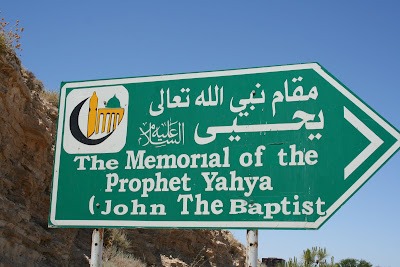
Although the gospels do not mention the palace of Machearus by name, the historian Josepheus (who our guide reminded us got many things right but a few things wrong) names Machearus as the location of John the Baptist’s imprisonment and execution. Tradition holds that John’s body is buried in a cave near the foot of the fortress. At Machaerus we were surrounded by stillness and the desolation of the desert, yet at the same time I sensed the presence of life quietly moving all around as birds sailed and swooped, large butterflies flitted and silent lizards darted. I am developing a new appreciation and awe of the desert.
